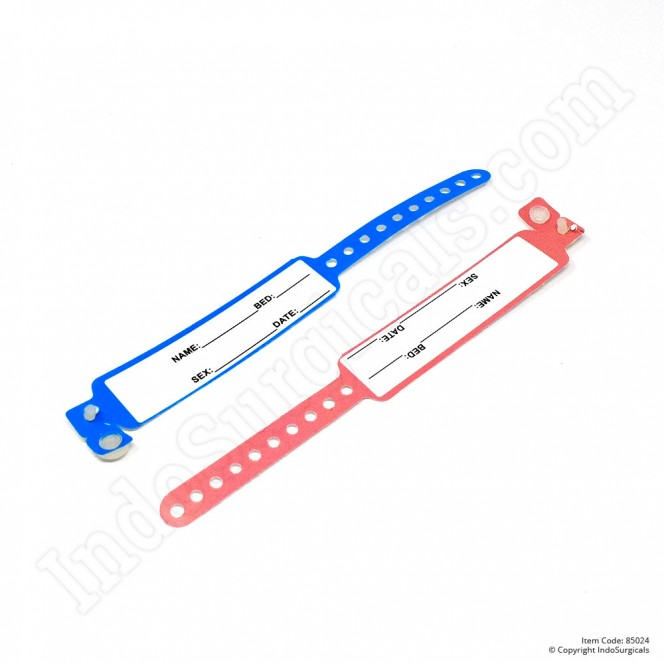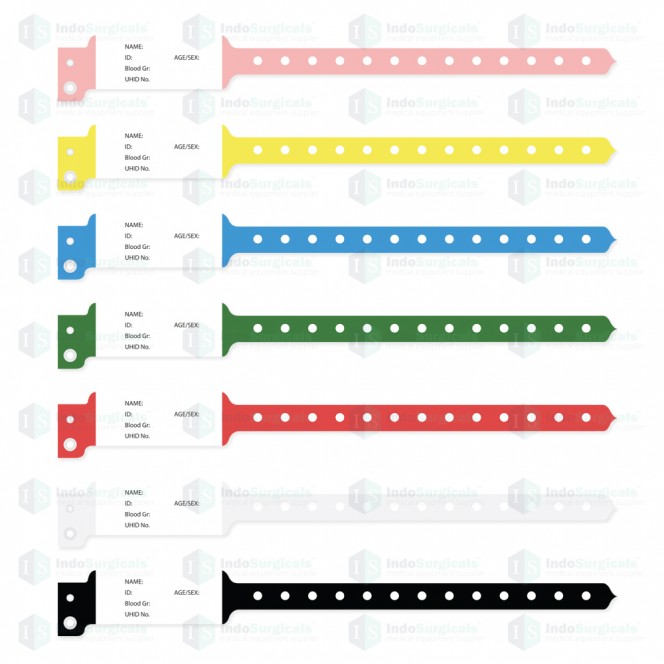Discovering the Various Types of Patient Identification Band Used in Medical Facilities
In the intricate globe of medical care, the critical duty of Patient Identification bands commonly goes undetected. These bands, differing from straightforward paper wristbands to innovative RFID bands, form the foundation of Patient security methods, making certain precision in Patient Identification.
Comprehending the Significance of Patient Identification Bands
While they might look like plain devices, Patient Identification bands play an important duty in medical centers. These bands serve as a vital tool for confirming Patient identification, stopping clinical mistakes associated with misidentification. The bands commonly display important info such as the Patient's name, age, blood kind, and any kind of known allergic reactions. They permit medical care experts to swiftly access this essential details, thus promoting prompt and exact clinical therapy. Patient Identification bands likewise aid in simplifying management jobs, ensuring exact record-keeping and billing. In spite of their simplicity, these bands symbolize the principle of Patient security, a cornerstone of top quality healthcare. Without them, the danger of medical errors, and consequently, Patient injury, might dramatically boost.
Standard Paper Wristbands: Their Usage and Limitations
Standard paper wristbands have been a staple in Patient Identification throughout various clinical centers. While their use prevails, they nurture certain limitations that might impact their efficiency in Patient management. This area will concentrate on the scope of their application and the fundamental drawbacks connected with their usage.
Paper Wristbands: Use Scope
In the world of Patient Identification, paper wristbands have actually long held a crucial function. These bands are usually utilized in outpatient setups, where the Patient's keep is momentary. The wristbands include important details such as the Patient's name, day of birth, and an one-of-a-kind Identification number. This simple, yet efficient system, enables clinical specialists to rapidly and accurately determine individuals, making certain the proper therapy is provided. Paper wristbands are also made use of in emergency situation circumstances, where fast Identification is vital. Their use expands to occasions like blood contribution drives and mass inoculation programs, even more stressing their flexibility. Despite innovations in technology, the modest paper wristband continues to be a cost-efficient and reputable option for Patient Identification in numerous health care scenarios.
Limitations of Paper Wristbands
Despite their widespread usage, paper wristbands are not without their disadvantages. Their physical resilience is among the significant limitations. Exposure to water, sweat, or misuse can provide them unreadable or perhaps trigger them to break down. Furthermore, paper wristbands typically do not have the technological abilities of even more modern-day options, such as barcoding or RFID chips, limiting their performance to merely presenting composed details. The inability to update or change the data on the wristband is an additional shortcoming. If the info is transcribed, legibility can be jeopardized, leading to prospective misidentification. Paper wristbands can cause discomfort or skin inflammation to some clients, especially when used for prolonged periods.
Barcoded Wristbands: Developments in Patient Identification
While Patient Identification has long been a critical facet of health care, the advent of barcoded wristbands indicates a significant leap onward. These bands take advantage of the simpleness of barcoding technology, permitting Patient info to be quickly checked and accessed. They improve the rate and precision of Patient Identification, lowering the danger of clinical mistakes associated with misidentification. Barcoded wristbands are economical, easy to create, and remove handwriting mistakes common with manual systems. They are not without restrictions. While they offer renovations over conventional bands, the barcode can come to be used or smudged, providing it unreadable. Regardless of this, barcoded wristbands continue to be an essential tool in modern health care setups, representing the crossway of technology and Patient care.
Radio Frequency Identification (RFID) Bands: an Action Towards Futuristic Health Care
The development of Patient Identification bands has caused the development of Superhigh frequency Identification (RFID) Bands (patient identification band). These cutting-edge tools existing key advantages for healthcare centers, using a much more reliable and highly advanced ways of Patient Identification. The execution of RFID in health care is a substantial action in the direction of a more futuristic approach to Patient monitoring and security
Comprehending RFID Bands

RFID Bands: Key Advantages
Embracing a future where innovation and healthcare combine, superhigh frequency Identification bands offer several crucial advantages. Largely, these bands boost Patient safety by supplying precise, immediate Identification, consequently minimizing medical mistakes. RFID bands can store a huge amount of Patient data, consisting of case history and allergic reactions, enabling customized treatment. They also simplify management tasks, as the automated data access changes hands-on procedures, improving efficiency and minimizing documents. RFID bands offer real-time monitoring of people, essential in risky settings such as surgery or extensive care. Last but not least, these bands are resistant and long lasting to environmental elements, ensuring consistent capability. Overall, RFID bands stand for a considerable development in Patient Identification innovation, benefiting both patients and healthcare companies.
Implementing RFID in Health Care
As we tip into a technologically sophisticated period, the application of RFID bands in healthcare ends up being significantly vital. These bands supply a seamless means to track and recognize patients, ensuring their safety and improving efficiency in therapy procedures. RFID bands offer numerous benefits over typical Identification methods. They can save a substantial quantity of data, including the Patient's case history and treatment plans, which can be easily accessed by doctor. This data helps doctors make notified decisions regarding the Patient's treatment strategy. Additionally, RFID bands decrease medical errors by providing exact Patient Identification, which is vital in avoiding misdiagnosis or incorrect medication management. Therefore, the implementation of RFID bands is a substantial action towards enhancing Patient safety and healthcare delivery.

Color-Coded Wristbands: Assisting in Quick and Accurate Medical Diagnosis
In the bustling atmosphere of a clinical facility, color-coded wristbands have actually emerged as crucial devices for swift and precise Identification of an individual's clinical condition. These wristbands, put on by clients, bring details shades that match to various clinical conditions or conditions. This system is created to supply prompt aesthetic hints to medical care service providers, improving Patient safety and care top quality.
Techniques for Effective Implementation and Administration of Patient ID Bands
Attaining optimal use of Patient Identification bands necessitates a well-structured method for their execution and administration. Patient education and learning is likewise important; individuals need to comprehend the function of the bands and the demand for their constant wear. It's essential to have a backup strategy in location, such as barcode scanning or biometrics, to guarantee that Patient Identification is never ever jeopardized.
Final thought
Patient Identification bands are essential in medical facilities to ensure safety and security and precision. Conventional paper, barcoded, RFID, and color-coded wristbands each hold distinct advantages, varying from cost-effectiveness to innovative data storage and get redirected here instant medical notifies. Efficient application and monitoring of these bands can considerably minimize clinical errors, improve performance, and improve general Patient treatment. Thus, understanding and using these Identification devices is vital for maintaining high requirements in medical care.
These bands, differing from straightforward paper wristbands to innovative RFID bands, develop the foundation of Patient security protocols, guaranteeing accuracy in Patient Identification.The evolution of Patient Identification bands has brought about the development of Radio Frequency Identification (RFID) pop over to this web-site Bands. Overall, RFID bands represent a substantial improvement in Patient Identification innovation, profiting both individuals and health care companies.
RFID bands decrease medical errors by supplying accurate Patient Identification, which is critical in avoiding misdiagnosis or wrong medicine administration. Patient education and learning is additionally critical; people must recognize the function of the bands and the requirement for their continuous wear.